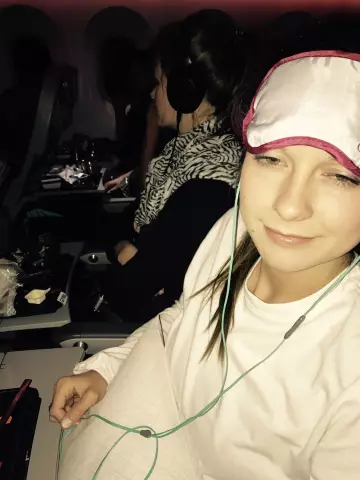- Author Rachel Wainwright [email protected].
- Public 2023-12-15 07:39.
- Last modified 2025-11-02 20:14.
Sleeping sickness
Overview of Infection

Sleeping sickness (African trypasonomiasis or African sleeping sickness) is an infection that many readers learned about in childhood, from the pages of the adventure novels of Jules Verne and Louis Boussinard. Famous authors vividly described the symptoms of sleeping sickness and its terrible consequences, which, however, cannot be called an exaggeration, because in most cases the infected did die. The causative agent of sleeping sickness enters the human body after being bitten by tsetse flies (genus Glossina), which, in turn, get sick from animals and people carrying pathogenic parasites from the genus Trypanosoma. Sleeping sickness is common on the African continent. Every year, sleeping sickness is diagnosed in 50-70 thousand people, but the number of infected is constantly decreasing,which is associated with urbanization and improved quality of life in developing countries.
Experts distinguish several types of African sleeping sickness. Gambian African sleeping sickness is common near large lakes and along rivers. The Rhodesian form, on the other hand, is typical of savannahs and is often found in areas where tropical forests are cleared. The causative agents of sleeping sickness are flat parasites with an oblong-fusiform shape. They are very small (12-20 microns in length), but mobile, easily move from place to place with a translucent membrane running along the body.
Sleeping sickness symptoms and clinical picture of the disease
The tsetse fly inoculates the parasites into the subcutaneous space during bloodsucking. A certain number of trypanosomes immediately enter the bloodstream, but most of them remain at the site of the bite, where infectious agents actively multiply and form a characteristic painful node - chancre. Then the parasites begin to spread throughout the body through the interstitial space and lymphatic vessels. Interestingly, sleeping sickness is constantly mutating. The first wave of tryponas dies due to the action of antibodies, but in the course of this invisible struggle, a new, antigenic form of infection is developed. At the same time, one strain of sleeping sickness forms several hundred new variants of parasites. It is not surprising, therefore, that in the absence of adequate treatment, a person is absolutely defenseless against African sleeping sickness. It is also troubling thatthat experts still have no idea how exactly tissue damage occurs.
As for the symptoms of sleeping sickness. Rhodesian sleeping sickness is more acute and severe than the Gambian, but, in general, the signs of infection in both forms are almost the same:
- the presence of an entrance chancre - a painful node at the site of trypanosome inoculation. It appears 5-7 days later after the causative agent of sleeping sickness enters the body. Chancre can appear anywhere on the body. It sometimes comes on, but ultimately almost always heals spontaneously;
- relapsing fever;
- insomnia;
- severe headaches;
- trouble concentrating;
- developing tachycardia;
- rise in body temperature;
- an increase in nodes in the posterior cervical triangle;
- painful subcutaneous edema;
- in Europeans, in addition to the main symptoms, ring-shaped erythema is manifested.
If a person is diagnosed with African sleeping sickness of the Gambian type, exacerbations of the disease are replaced by latent periods of calm. In this case, the infection can remain unrecognized for a long time until the signs of damage to the central nervous system appear in full force. Rhodesian sleeping sickness, the symptoms of which are more pronounced, are detected more quickly. With this form, patients are almost immediately exhausted, however, the lesions of the lymph nodes are less noticeable. Note also that, if untreated, patients usually die from intercurrent infections and myocarditis before the typical sleeping sickness syndrome develops.
As the infection progresses, the symptoms of sleeping sickness become more severe. In patients, absent expression appears, the lower lip hangs down, the eyelids drop. Patients seem to fall into a stupor and the further, the more difficult it is to induce them to perform the simplest actions. They never refuse food, but they do not ask for it, they rarely make contact with others. In the last stages, sleeping sickness leads to seizures, transient paralysis, coma, epilepsy and, finally, inevitable death.
Treatment and prevention of African sleeping sickness

Traditionally used for the treatment of sleeping sickness: suramin, organic compounds of arsenic and pentamidine. Eflornithine is often used and is especially effective in the Gambian form. Specific treatment methods depend on the degree of damage to the central nervous system, the resistance of the pathogen to drugs and the general condition of the patient. Due to their high toxicity, all of the above drugs have severe side effects, so they must be used only in clinics under the constant supervision of specialists.
Prevention of sleeping sickness consists in following simple but effective rules:
- refuse to visit the foci of the disease unless absolutely necessary;
- wear light-colored clothing, long-sleeved shirts;
- take insect repellents with you when you go outside;
- to prevent the disease every 6 months, do an intramuscular injection of pentamidine.
YouTube video related to the article:
The information is generalized and provided for informational purposes only. At the first sign of illness, see your doctor. Self-medication is hazardous to health!






